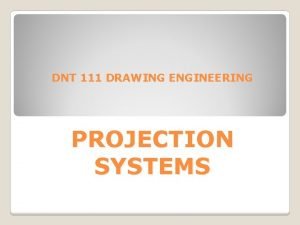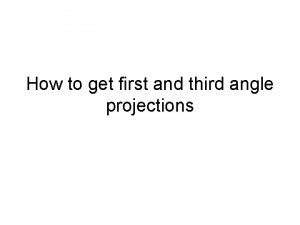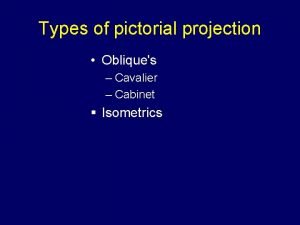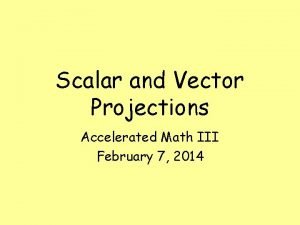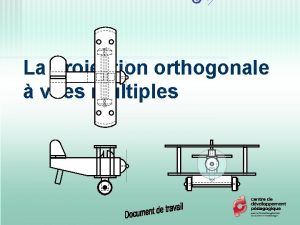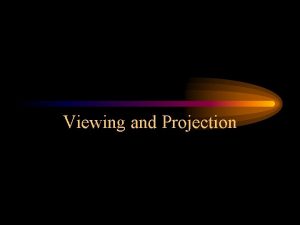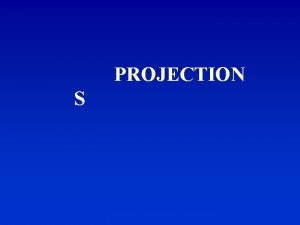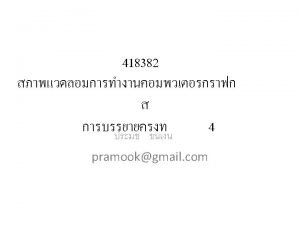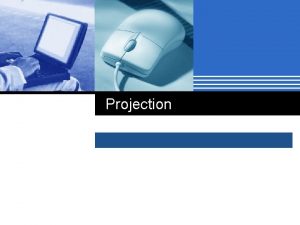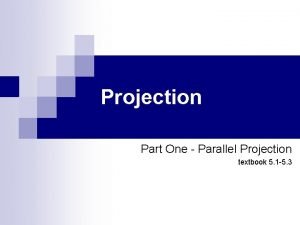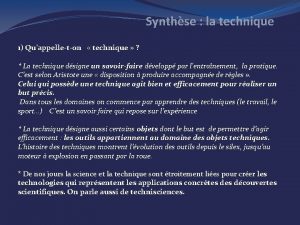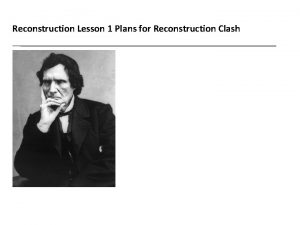Reconstruction Technique 1 Parallel Projection 2 Projection in

















- Slides: 17

Reconstruction Technique 1

Parallel Projection 2

Projection in Cartesian and polar system:

Projection in Cartesian and polar system: 4

Algebraic (Iterative) Reconstruction Technique (ART) 13 A C B 16 D 10 5 14 12 5

Algebraic (Iterative) Reconstruction Technique (ART) We have originally output from detector: We start with the first prediction: 4/6=1. 5 6

Algebraic (Iterative) Reconstruction Technique (ART) 7

ART Algorithm For each actual projection prθ(l), predict pixel value and obtain predicted prθp(l) value 8

ART Algorithm 9

Fourier Slice Theorem: 1 D Fourier transform of a parallel projection is equal to a slice of 2 D FT of the original object 10

Fourier Slice Theorem: FT of 2 D FT of object: 11

Fourier Slice Theorem: 1 D FT of object along line v=0 or q=0 12

FT of in (l , s) coordinate system: 13

Summing 1 D FT of projections of object at a number of angles gives an estimate of 2 D FT of the object (projections are inserted along radial lines) 14

2π|ω|/K (K=180) ω = √(u 2=v 2) Deconvolution filter 15

Algorithm for FT reconstruction: 1) For each angle θ between 0 to 180 for all (l) 2) Measure projection prθ 3) Fourier transform it to find Sθ 4) Multiply it by weighting function 2π|w|/K (K=180) (ie. filtering (weighting) each FT data lines to estimate a pie-shaped wedge from line) 5 - Inserting data from all projections into 2 D FT place 6 - Doing interpolation in frequency domain to fill the gap in high frequency regions. 5) Inverse FT 6) Interpolation data if necessary 16

Continuous and discrete version of the Shepp and Logan filter to reduce the emphasis given by HF components 17
 Algebraic reconstruction technique example
Algebraic reconstruction technique example Parallel reconstruction
Parallel reconstruction Orthographic third angle projection
Orthographic third angle projection First and third angle projections
First and third angle projections Cavalier oblique
Cavalier oblique Scalar vs vector projection
Scalar vs vector projection Orthographic projection to isometric view
Orthographic projection to isometric view Projection a vues multiple
Projection a vues multiple Parallel projection in computer graphics
Parallel projection in computer graphics Parallel wire technique
Parallel wire technique Parallel wire technique
Parallel wire technique Parallel wire technique
Parallel wire technique Parallel wire technique
Parallel wire technique Serial in serial out shift register truth table
Serial in serial out shift register truth table Parallel and non parallel structure
Parallel and non parallel structure Inner whorl
Inner whorl Parallelism grammar definition
Parallelism grammar definition Means
Means


